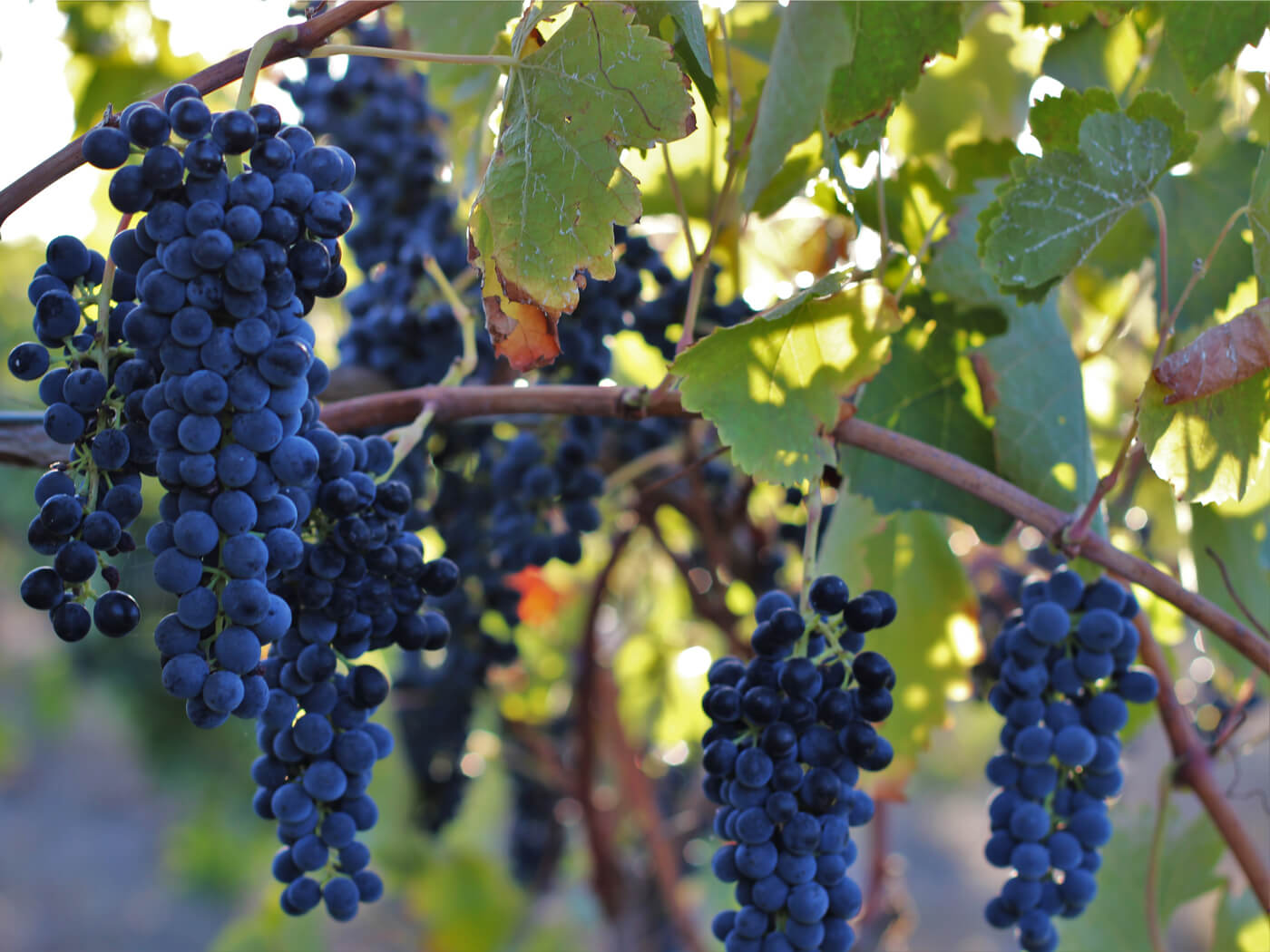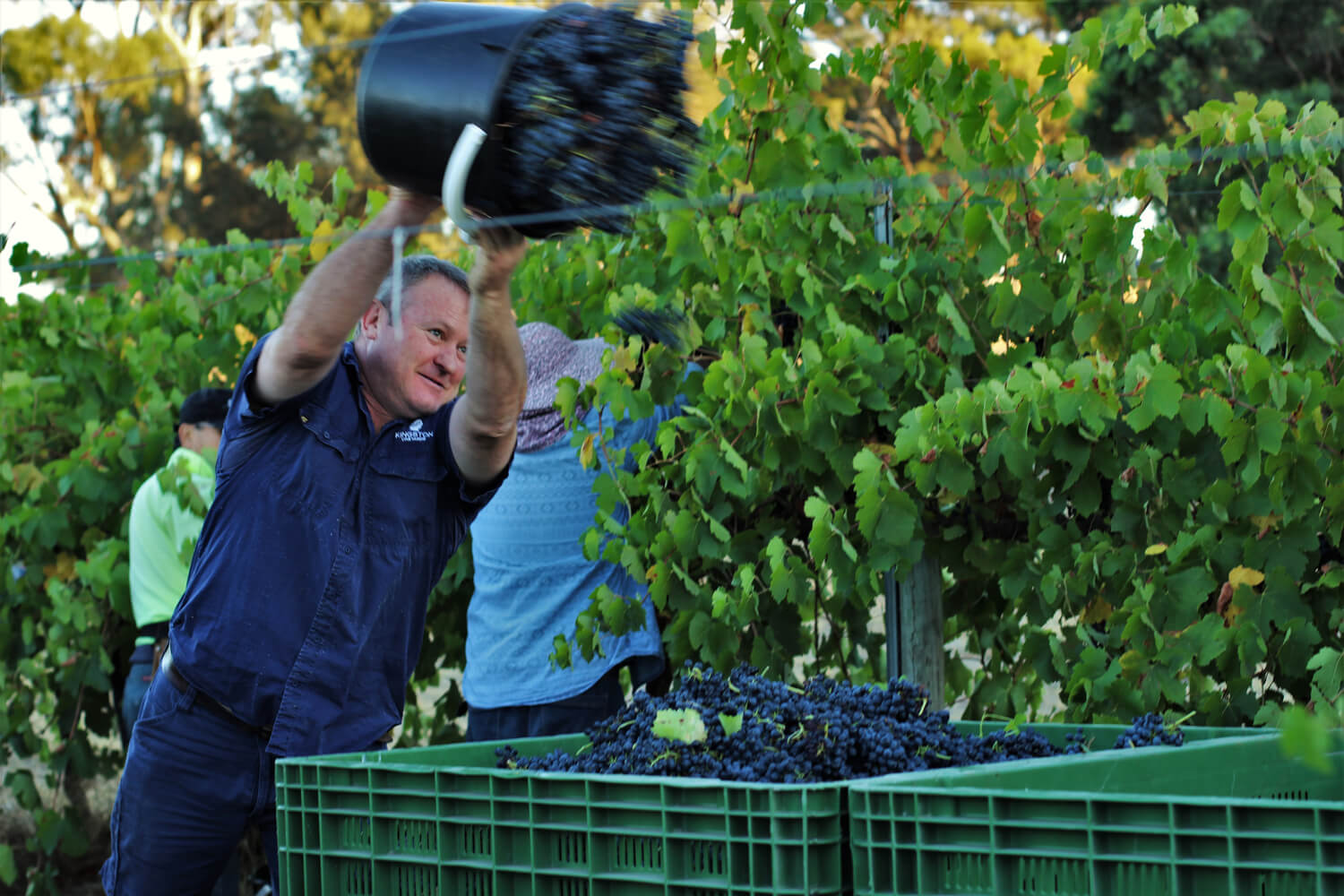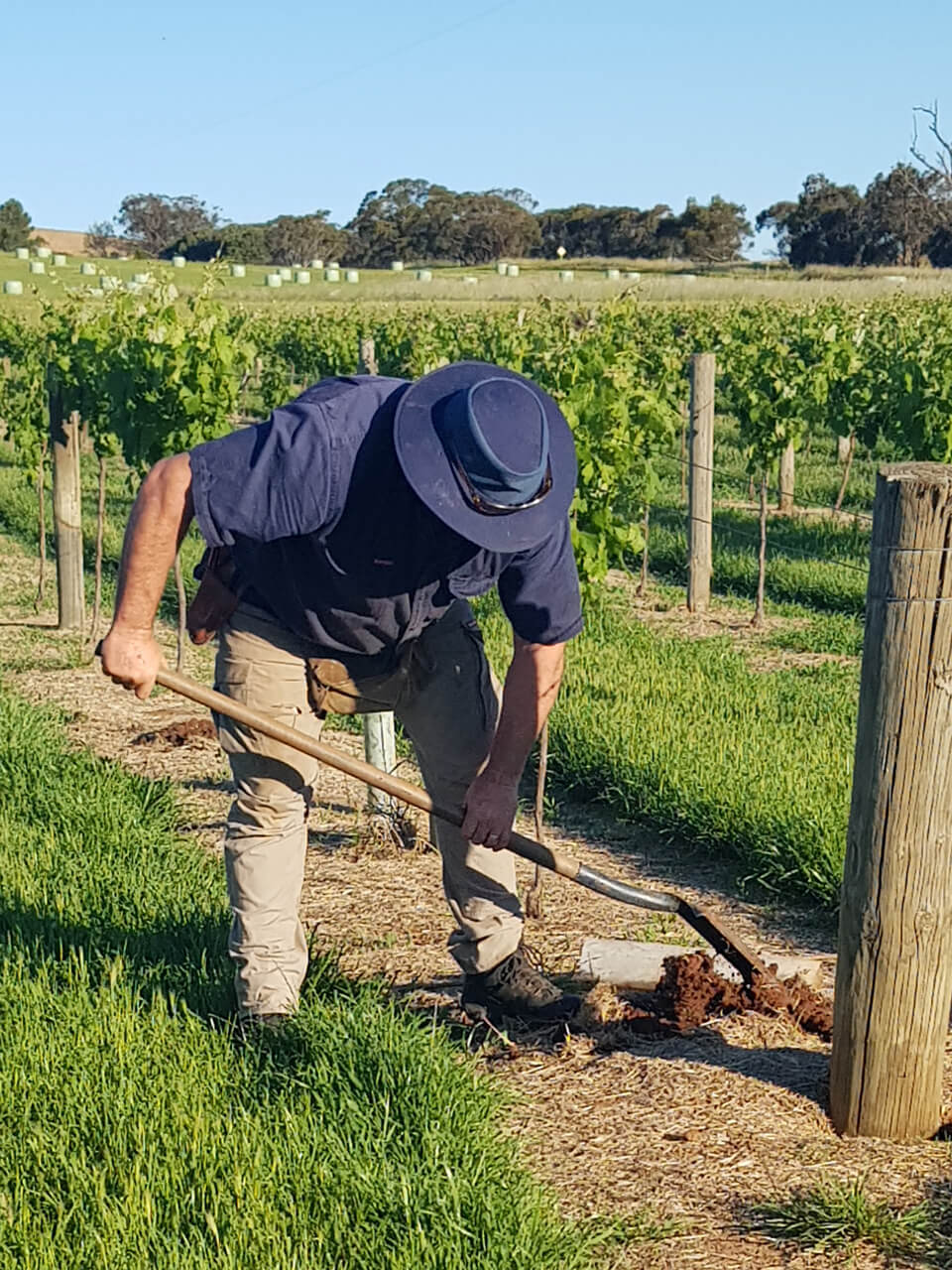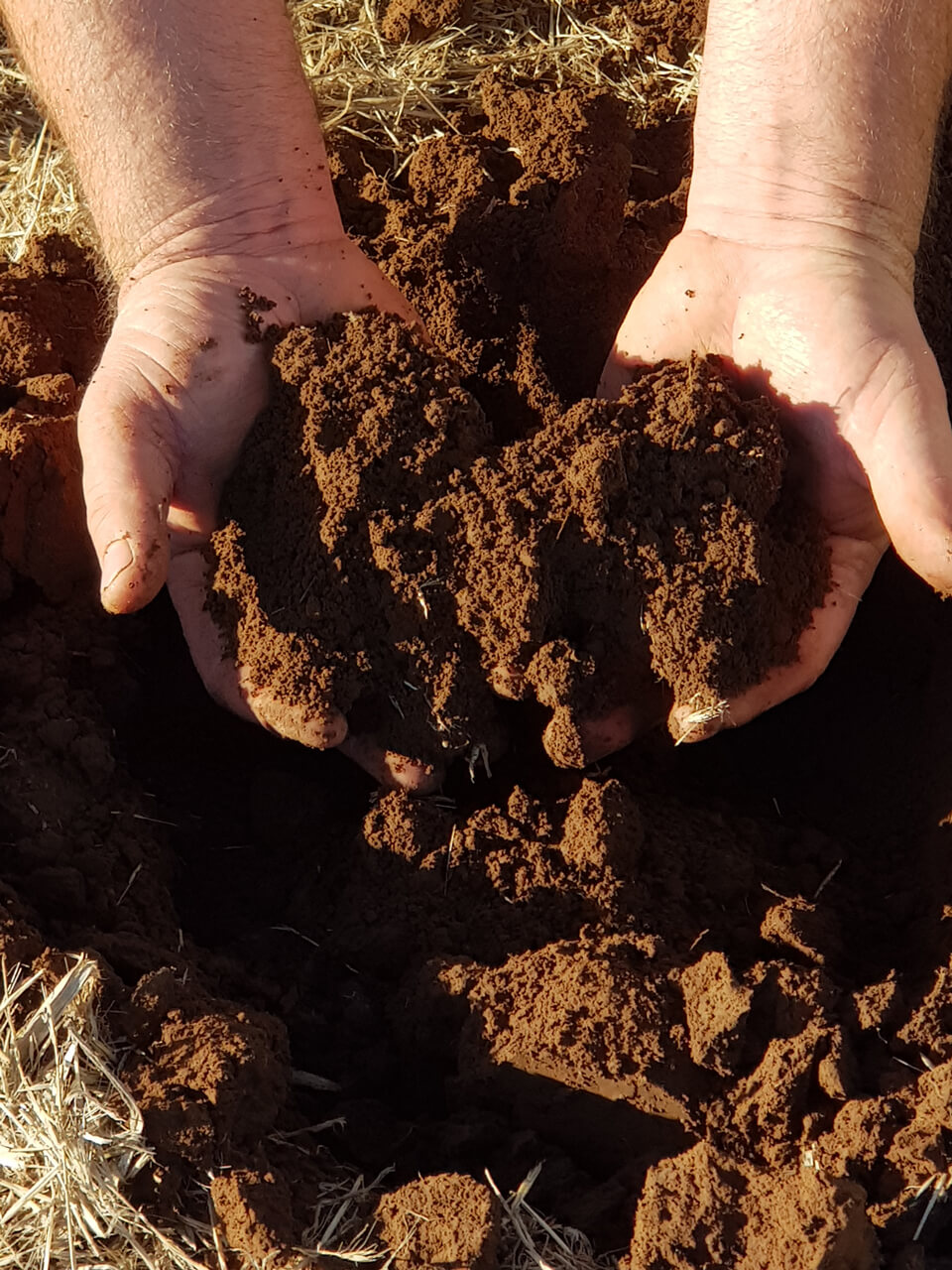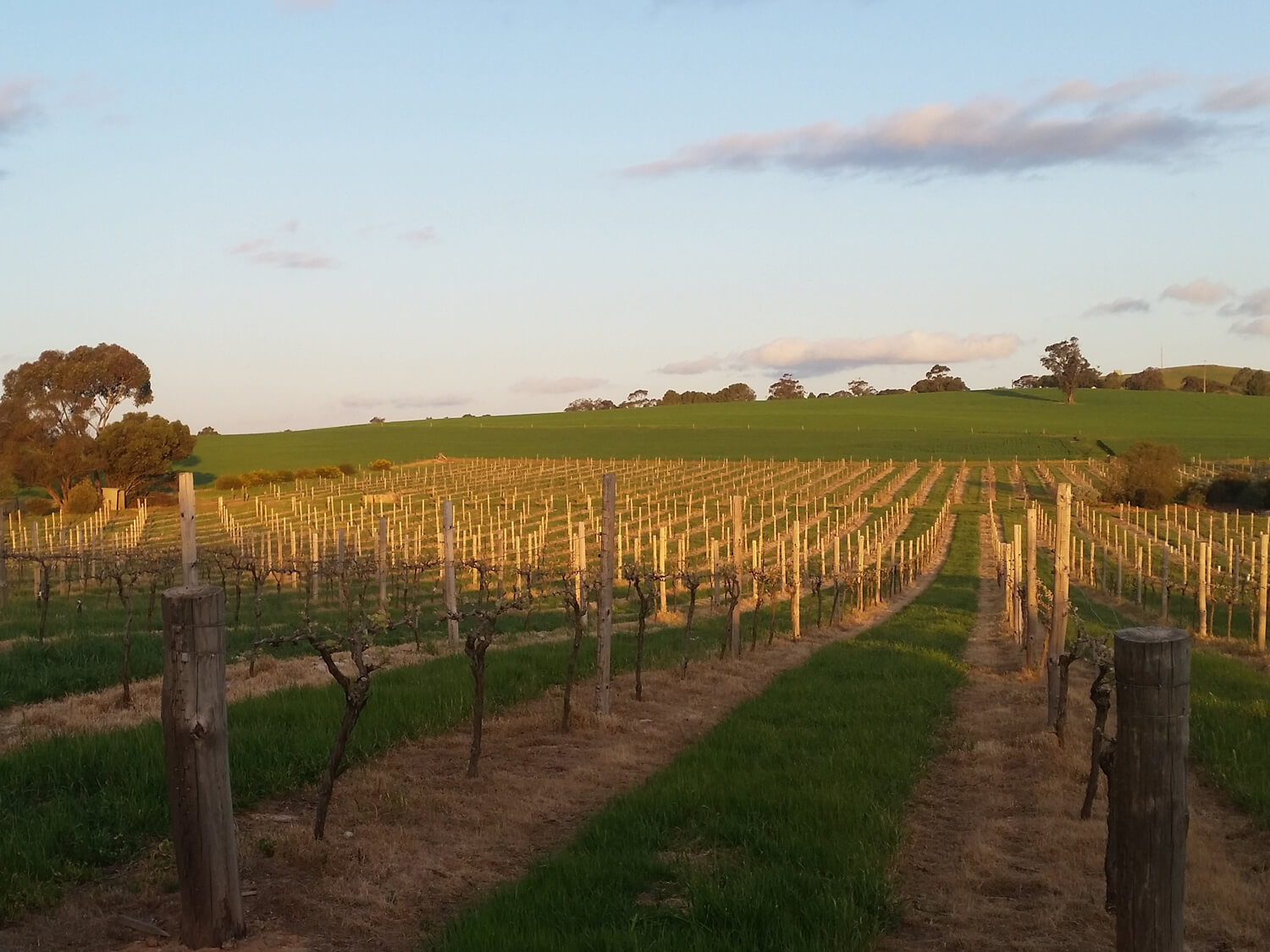Peter and Mel Raymond’s Garden & Field – Gnadenberg Road is a young vineyard planted to an old site, once the home to venerable vines that were cruelly plucked from the ground some 40 years ago. In the relative cool of the Barossa’s Eden Valley, the 4-hectare vineyard is a near neighbour to Henschke’s iconic Hill of Grace, with the focus on shiraz, across eight clones. The vines are dry grown and farmed in a sympathetic and regenerative manner, with soil health and biodiversity at the fore. With a little over a decade in vine age, the fruit has already contributed to a string of top Penfolds reds, as well as wines for the Raymonds own label.
Before finding a suitable home site – an ongoing quest – Peter Raymond had primarily managed vineyards in the Barossa Valley, as well as the Riverland and for Brown Brothers in Victoria’s High Country. That latter role was a four-year interlude, but Raymond’s heart always lay in making shiraz in the Barossa. In 2008, a 6-hectare farm on Gnadenberg Road in the cool of the Barossa’s elevated Eden Valley came to their attention, and he and his wife Mel soon settled their family there.
That site drew Raymond with the potential of both the soils and the suitability of the slope’s aspect for grape-growing. The site is also just over a kilometre and a half from Henschke’s Hill of Grace Vineyard, which certainly may have also influenced the decision to purchase the property, but its long-term winegrowing history was a mystery until Raymond actually decided to plant. Or rather, replant.
When Raymond first began work on the new vineyard in 2009, he was apparently greeted by a brigade of elderly neighbourhood volunteers who had picked the grapes many decades prior and were keen to see the legacy of the site restored. The former vineyard was pulled out in 1980, with the then owner having no interest in growing grapes.
Those original vines were planted in 1856 by Samuel Smith, the founder of Yalumba, with shiraz, cabernet sauvignon and ugni blanc making up the mix. The site was later sold to the Schilling family, who tended the vines for over 100 years – with the fruit going to Yalumba – before the farm was sold in the 1970s, and then the vines pulled a decade later.
Raymond’s new vineyard was established over 4 hectares, with eight clones of shiraz planted on own roots, while the rockiest part hectare of the site was planted to vermentino to act as a rootstock to later graft to shiraz, which is now producing fully after being converted in 2015. There are also small plantings of cabernet sauvignon and refosco.
“The soils are red-brown earth over heavy red clay and fractured schists,” says Raymond. “The site mostly has a southerly aspect, very exposed to wind and surrounded by cropping land. We made the assumption that dry growing was possible based on natural vegetation, remnant grass stubble and the good health of the trees in what appeared to be a very dry sub-region.” That assumption has proven correct, with the vineyard entirely dry grown but producing comparable yields to neighbouring vineyards that are irrigated, while the high quality of the fruit means it is also in high demand.
Raymond notes that he uses minimal inorganic fertilisers, mainly employing organic nutrient treatments. “The soil feeds the vines, and everything in it,” he says. Tractor use is essentially limited to applying fungal treatments, and then only about three times a year on average, which means less compaction and a lot less diesel use. A naturally occurring mid-row sward is maintained until spring, then over-sown with medic grasses that have been inoculated with beneficial mycorrhizal fungi. Compost teas, compost (made onsite) and mulch are also applied annually. “The ‘whole farm’ system is everything, and everything is interconnected within the system,” says Raymond, noting that the work amongst the vines is as important as balancing it with the native ecosystem that fringes the vineyard.
“You can’t change something without affecting something else. The term ‘weed’ is relative, and we believe diversity of plant species is critical to a stable system. We’ve planted over 3,000 natives across our site, introduced native grasses and retained those already there. Since planting the vineyard and trees, we have seen a massive increase in microfauna and macrofauna, and in turn native birds and small bats. The soil health is simply astonishing, and the vines and wine reflect this.”
Buoyed by the quality and character of the fruit that was coming of his young vines, Raymond began work on his own Garden & Field label, commercially launching from the 2015 vintage, but it is perhaps the demand and destination for the fruit he sells that best illustrates the effectiveness of his methods. “Demand is outstripping supply by 100 to one,” says Raymond, with fruit making the cut for premium Penfolds wines, such as ‘RWT’ for seven consecutive vintages. “We’re very proud of our site’s heritage and provenance, and our management ensures we maximise the potential for yield and quality every year.”

